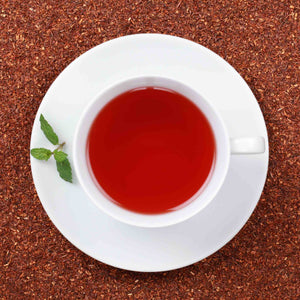The Mint Tea Routes
Jul 04, 2024
The Mint Tea Routes in Morocco
A Sensory, Cultural and Historical Journey
Moroccan mint tea is more than just a drink: it's a true art of living, a symbol of sharing, hospitality, and elegance. Traveling Morocco's Mint Tea Routes explores the deep roots of a tradition that unites peoples, regions, and generations.
From Salé to Fez , from Marrakech to Chefchaouen , passing through the mint fields of Settat , this immersion reveals a thousand-year-old culture, shaped by exchanges between East and West . Discover with Maison NANA1807 the history, the emblematic regions, and the secrets of making the best Moroccan Mint Tea , inspired by the heritage of Mouima , and sublimated in our signature recipe: MOUIMA Tea .

An Ancient History | Tea in Morocco, Long Before the 18th Century
Contrary to popular belief, green tea was not introduced to Morocco by the British, but much earlier. As early as the 8th century , trade existed between China and the Arab-Muslim world. As early as the 12th century , trading ships called at Moroccan ports such as Mogador (Essaouira) , where green tea from China was exchanged for spices, silk or amber.
Mint Tea: A Moroccan Symphony
It is the alliance of imported green tea and fresh local mint that gave birth to the legendary Moroccan Mint Tea . Offered at any time of the day, it has become a pillar of Moroccan culture, served during religious ceremonies, festivals, or simply to welcome a guest.

Geography of Mint Tea | Routes to Explore
Moroccan Mint Lands
The mint used in the preparation of tea is grown mainly in the regions of:
- Settat (cradle of the Brouj variety)
- Meknes
- Rabat-Salé
- Larache
- Marrakech
- Agadir
Annual production exceeds 65,000 tonnes , on more than 4,000 hectares. The Settat region remains the most productive with up to 120 tonnes/hectare/year for certain varieties.
Organic Mint | Between Tradition and Responsible Agriculture
Morocco is seeing the emergence of a new dynamic: that of organic mint . The regions of Fez-Meknes, Rabat-Salé-Kénitra, Marrakech-Safi , and Drâa-Tafilalet are developing environmentally friendly crops, in which Maison NANA1807 carefully selects its leaves to make MOUIMA Tea .

Mint Tea Towns | A Cultural Route
Salé, Port of History and City of Tea
The birthplace of Mouima , the inspiration behind Mouima Tea , Salé occupies a unique place on the Mint Tea map. Since the 8th century, its Atlantic port has facilitated trade between China, Africa and Europe. In the 17th century, it became the capital of the Republic of Bouregreg , ruled by the famous Salle Rovers , feared corsairs and navigators.
Good to know : MOUIMA Tea from Maison NANA1807 pays homage to this city, combining the power of Chinese green tea with the poetic freshness of Moroccan mint.
Points of interest in Salé
-
Medina of Salé : Enjoy authentic mint tea in traditional cafes.
-
Borj Adoumoue : Enjoy a moment suspended in time, a cup of tea in hand, facing the Bouregreg River.
-
Great Mosque of Salé : Sacred and historic place, witness to ancient tea rites.

Fez | Spiritual Capital and City of Tea
With its winding alleys and herbalist markets, Fez is a crossroads of flavors. In the medina, mint tea is bought by the gram, prepared with care, and shared with pride.
Marrakech | The Ochre City, Tea on Show
In Jemaa el-Fna , the precise gestures of Moroccan tea masters fascinate passersby. The high pour , the lapping of the tea , the fine foam that forms on the surface: everything is art.
Chefchaouen | The Blue Pearl of the North
Hidden between mountains and clouds, Chefchaouen is one of the most photogenic places in the kingdom, where mint tea is enjoyed on the colorful terraces, between azure and mint green.
Maison NANA1807 | The Mint Tea par Excellence
Inspired by Mouima , guardian of family traditions in Salé, Maison NANA1807 perpetuates the art of Moroccan Mint Tea in a modern, elegant, and 100% natural version.
MOUIMA Tea is:
- High quality Chinese Gunpowder green tea
- A hand-picked organic sweet mint
- Subtle and comforting spices
- A recipe inherited from history and enriched by innovation

Order MOUIMA Tea
A Gesture of Culture and Well-being
Treat yourself to a sensory journey by ordering MOUIMA Tea now from our online store. Whether you are a Moroccan tea lover, curious about tea cultures , or simply looking for a moment of peace and sweetness, this creation from Maison NANA1807 is made for you.





